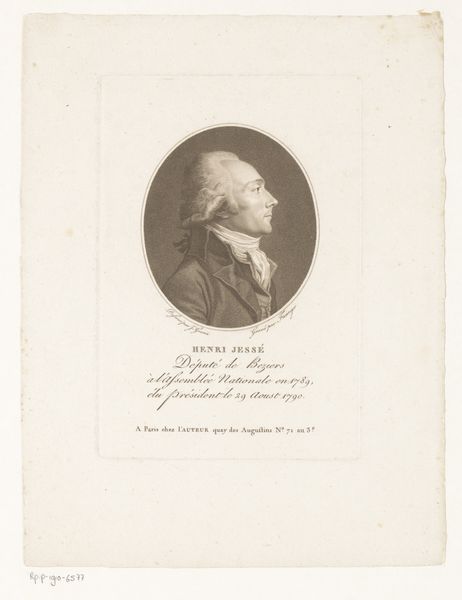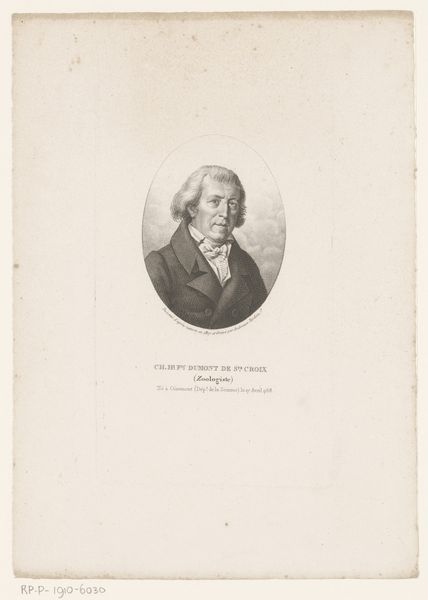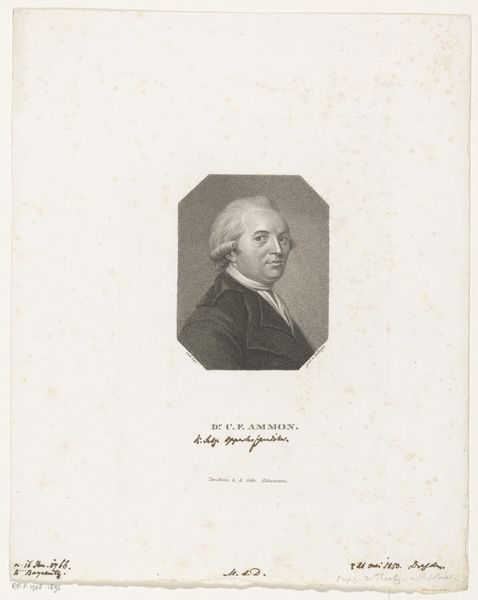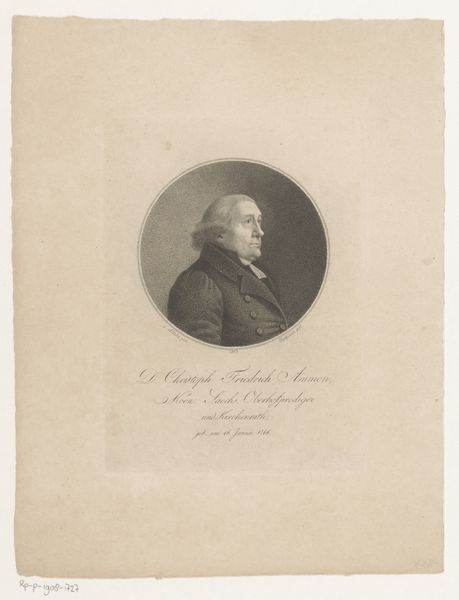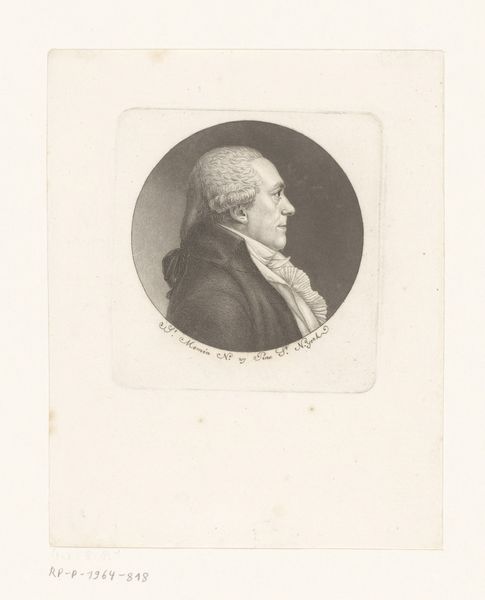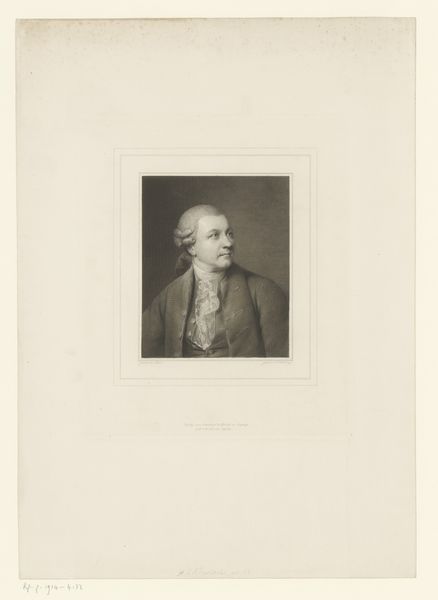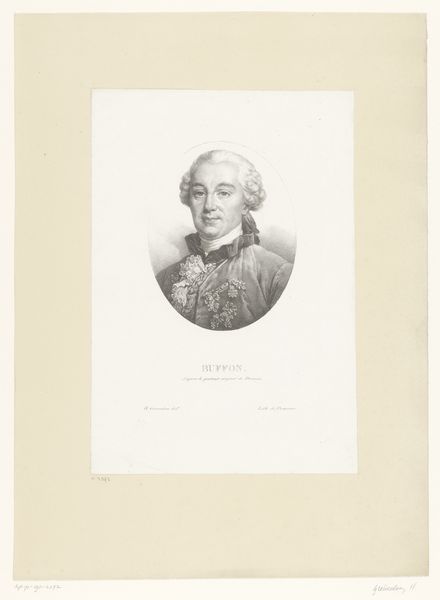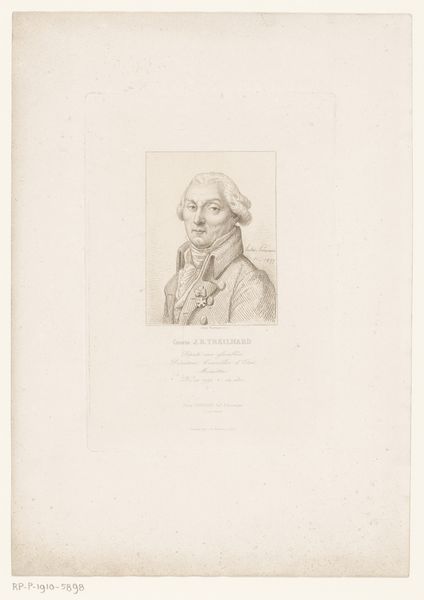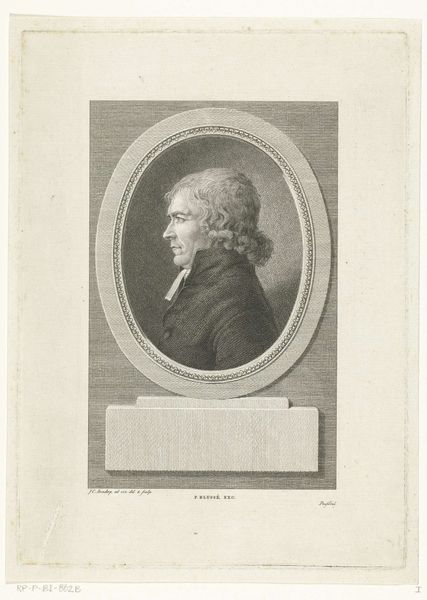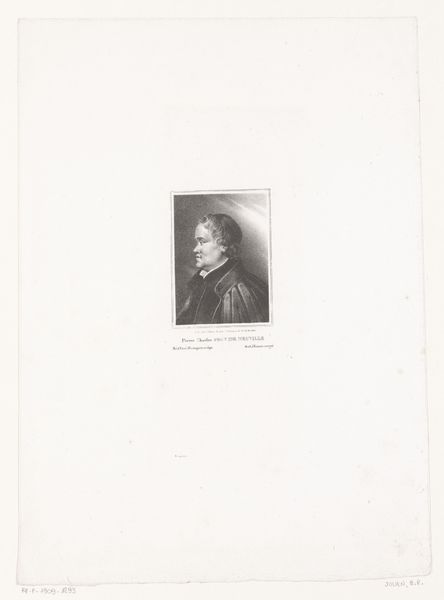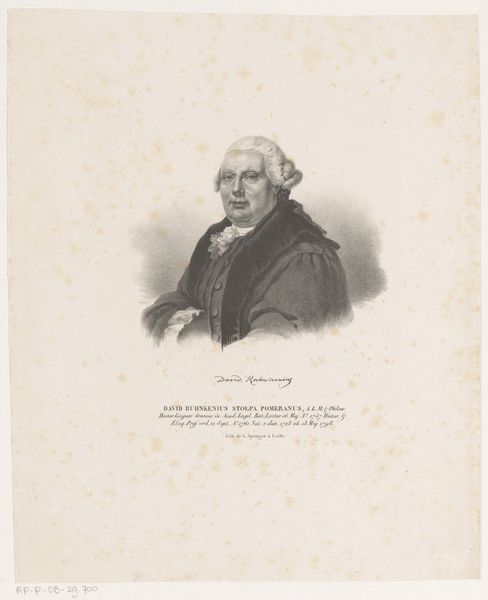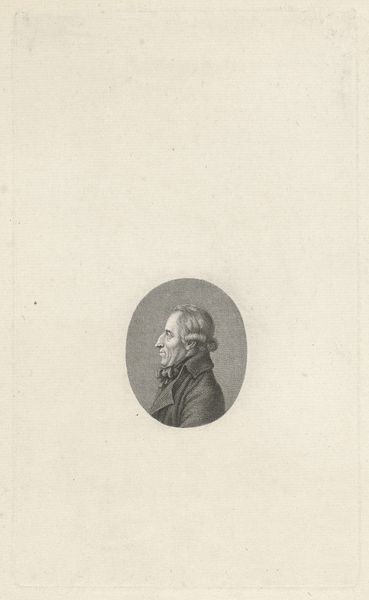
drawing, engraving
#
portrait
#
drawing
#
neoclacissism
#
engraving
Dimensions: height 205 mm, width 121 mm
Copyright: Rijks Museum: Open Domain
Curator: Here we have a look at "Portret van Gottfried August Bürger," an engraving created between 1785 and 1858, found here at the Rijksmuseum. Editor: It possesses such austerity. A stoic profile rendered in severe grayscale tones; quite somber, really. Curator: Precisely. The work embraces neoclassicism's clarity. Consider the composition – the sharp, controlled lines, the octagonal frame isolating the figure. Rossmässler uses line work to sculpt the face with precision and conveys a sense of idealized rationality through its formal qualities. Editor: I'm drawn to the process of engraving itself here, too. Think about the artist, painstakingly incising those lines into the copperplate. The sheer labor involved in producing what we might see as an editioned print speaks volumes about artistic intent during that era. Also, the mass reproduction capability would change not only how artistic labor operated but impacted the bourgeoisie consumption. Curator: The engraving style is quite striking when you consider the broader philosophical movement of that time. With its dedication to clarity, it shows neoclassicism at its peak—reflecting ideas of order and rationality that permeate philosophical thinking of the late eighteenth century. Editor: I also see the very material used. An etching like this suggests ideas about the value of portraits at this point of time: reproducible, easily available, while allowing the sitter, now represented in ink on paper, to traverse time almost effortlessly. The use of print also offers an intriguing social critique of who gets immortalized, since they must now consider circulation more carefully. Curator: Absolutely, those reproducible prints allowed portraits to enter bourgeois society in the 18th and 19th century, previously exclusively available to high society. But getting back to the formal impact here – the use of contrast heightens the intellectual quality that aligns so precisely with its subject. It mirrors ideals held during this era with stark elegance. Editor: It is true that form and social context come together quite seamlessly here. It highlights, perhaps in equal parts, artistic practice as something almost artisanal with neoclassical values on display. An aesthetic of sharp detail rendered on paper that circulates, almost becoming democratic. Curator: A poignant example how material and meaning were always interwoven into aesthetic consideration. Editor: Indeed! And how methods of artistic making influence their cultural relevance!
Comments
No comments
Be the first to comment and join the conversation on the ultimate creative platform.

